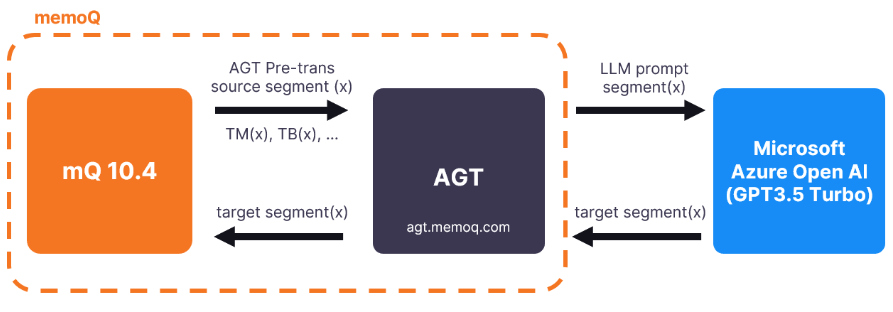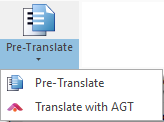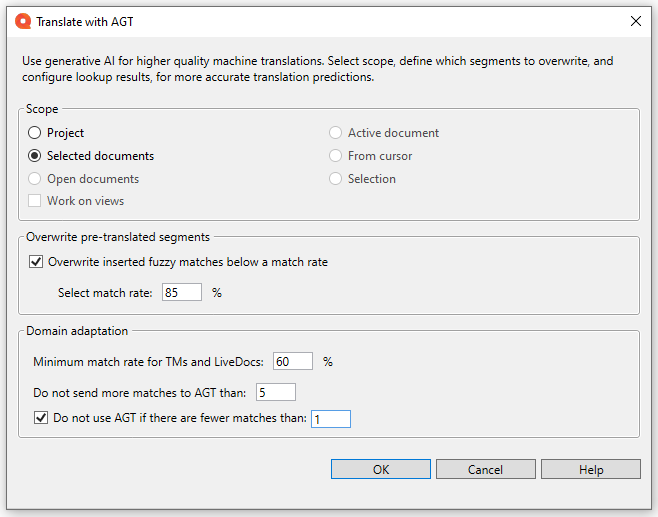Translate with AGT
To use memoQ AGT, you need memoQ TMS 10.4 or newer.
memoQ Adaptive Generative Translation (memoQ AGT) is an AI-based translation automation technology. It was designed for enterprises with extensive linguistic resources, but can also benefit LSPs.

memoQ AGT works with a large language model - Microsoft Azure OpenAI and uses instant domain adaptation, so it is important how you set up your project in memoQ TMS.
The translation results are tailored to your existing language resources, for example, translation memories (the most important resources when you use memoQ AGT), term bases, and LiveDocs corpora.
If you don’t have a lot of data in your translation memories, you can use LiveDocs and easily build up your corpus from previous translations. The longer your document will be, the better for memoQ AGT.
How to get here
-
First, sign up for the memoQ AGT and get an API key.
memoQ AGT plugin is available only for the memoQ desktop app. When translating with it, you can use only local resources.
-
Then, open memoQ TMS, and in the top-left corner click the Resource console icon
 .
. -
Under the MT settings list, at the bottom of the window, click Edit to edit an MT settings resource or create a new one.
-
On the MT settings resource's Services tab, configure the Adaptive Generative Translation (AGT) plugin.
-
In the AGT plugin settings window, enter your API key and click the Verify API key button.
-
Add the AGT plugin to your translation project.
-
In the project's Translations window or in the translation editor, on the Preparation ribbon, click Pre-translate. In the dropdown list, click Translate with AGT
 .
.
-
The Translate with AGT window opens:

If your project is not configured to use memoQ AGT, memoQ shows below information:

What can you do?
-
Select the translation scope.
When using memoQ AGT for the first time, make sure to select your scope carefully and not use too big volumes.
-
Decide what to do with pre-translated segments:
If you want to overwrite earlier pre-translations, check the Overwrite inserted fuzzy matches below a match rate checkbox. Then, select the percentage value of the match rate. During the pre-translation process, memoQ will overwrite Pre-translated segments that have lower match rates than this.
If you don’t check this checkbox, memoQ AGT will not change any Pre-translated segments.
-
Decide what fuzzy matches memoQ AGT picks up from TMs and LiveDocs.
-
In the Domain adaptation section, enter a value into the Minimum match rate for TMs and LiveDocs field. During the pre-translation process, memoQ will not send to memoQ AGT any TM and LiveDocs fuzzy matches that have lower match rates than this.
Term base matches are always sent to memoQ AGT.
-
Then, decide how many matches memoQ TMS should send to memoQ AGT.
Not enough matches? You can decide not to use memoQ AGT.
-
When you finish
To run the pre-translation, and return to the translation editor or to Project home: Click OK.
To return to the translation editor or to Project home, without changing the documents: Click Cancel.